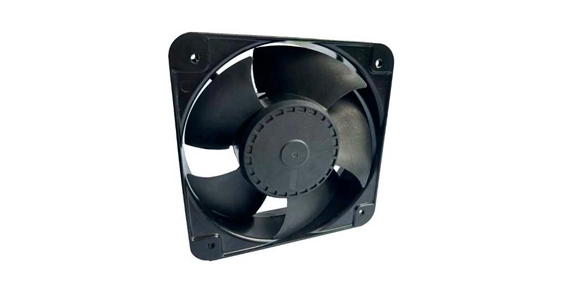Noise reduction in automotive fan systems is a common challenge faced by manufacturers and designers. The need to provide efficient cooling without compromising on noise levels has become increasingly important in the automotive industry. In this article, we will discuss the challenges associated with car blower fan noise and explore potential solutions to achieve quieter fan operation.
Understanding the Challenges of Car Blower Fan Noise
The application of axial fan plays a crucial role in maintaining the desired temperature inside a vehicle. However, the operation of the fan often generates unpleasant noise levels, which can be a source of annoyance for drivers and passengers. The main challenge in reducing car blower fan noise lies in striking the right balance between effective cooling and minimized noise emission.

Achieving Noise Reduction without Compromising Cooling Efficiency with Car Blower Fan
One of the key concerns when it comes to reducing car blower fan noise is ensuring that cooling efficiency is not compromised. Cooling performance is critical for maintaining a comfortable temperature inside the vehicle, especially during hot summer days. Designers and engineers need to explore innovative ways to achieve noise reduction without sacrificing the fan's cooling capabilities.
A Dynamic Solution to Noise Challenges - Car Blower Fan
To tackle the challenges associated with car blower fan noise, manufacturers are turning to dynamic solutions. By incorporating advanced technologies and materials, car blower fans can now operate more quietly while maintaining optimal cooling performance. For example, the use of sound-absorbing materials in the fan housing can significantly reduce noise levels generated by the fan blades.

Paving the Way for Quieter Car Blower Fan
In recent years, there have been significant advancements in the field of car blower fan noise reduction. Manufacturers are actively working towards developing quieter fan systems that enhance the overall driving experience. This includes the use of precision-engineered fan blades that are designed to reduce turbulence and minimize noise generation.
Furthermore, the integration of noise-canceling algorithms and intelligent control systems allows for real-time adjustments in fan speed and operation. This dynamic control mechanism ensures that the fan operates at optimum efficiency while keeping noise levels to a minimum.
In conclusion, reducing noise levels in automotive fan systems, such as car blower fans, is an ongoing challenge in the industry. Designers and engineers strive to achieve noise reduction without compromising cooling efficiency. Through the use of advanced technologies, materials, and dynamic control mechanisms, manufacturers are paving the way for quieter car blower fans. These innovations enhance the overall driving experience by reducing noise disturbances and creating a more comfortable environment for drivers and passengers alike.
As the automotive industry continues to evolve, the focus on noise reduction will remain a priority. By addressing the challenges associated with car blower fan noise, manufacturers can offer vehicles that provide efficient cooling and a quieter driving experience for consumers. The advancements in car blower fan technology are a testament to the industry's commitment to enhancing the overall quality and comfort of vehicles.

 EN
EN 

 +
+
 +
+
 +
+



